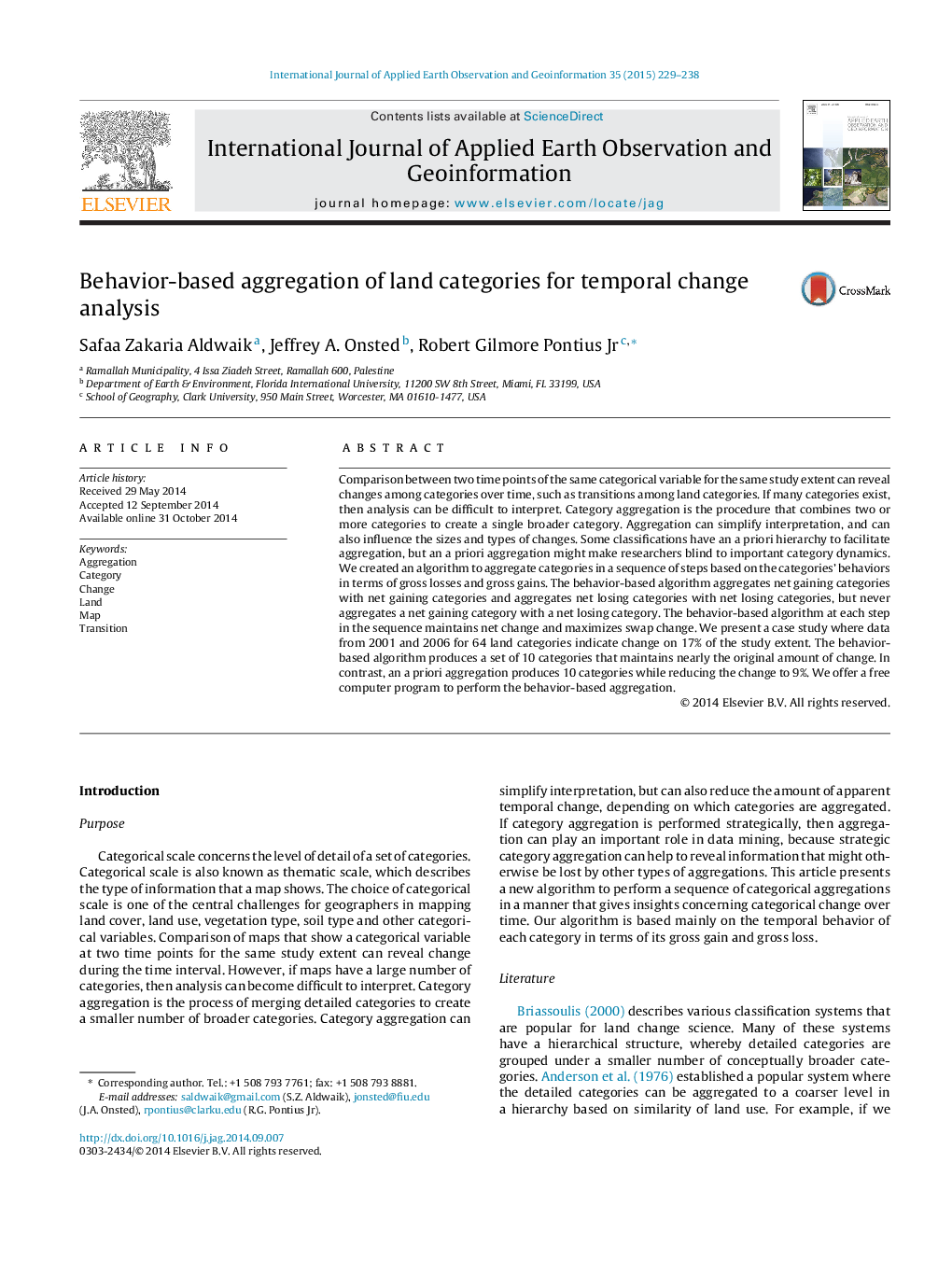| کد مقاله | کد نشریه | سال انتشار | مقاله انگلیسی | نسخه تمام متن |
|---|---|---|---|---|
| 4464717 | 1621823 | 2015 | 10 صفحه PDF | دانلود رایگان |
• We compare two time points to measure temporal changes among 64 categories.
• Aggregation reduces the number of categories and can reduce the change.
• Behavior-based aggregation is based on each category's gross gain and gross loss.
• Behavior-based aggregation can maintain more change than a priori aggregations.
• We offer a free computer program to perform behavior-based aggregation.
Comparison between two time points of the same categorical variable for the same study extent can reveal changes among categories over time, such as transitions among land categories. If many categories exist, then analysis can be difficult to interpret. Category aggregation is the procedure that combines two or more categories to create a single broader category. Aggregation can simplify interpretation, and can also influence the sizes and types of changes. Some classifications have an a priori hierarchy to facilitate aggregation, but an a priori aggregation might make researchers blind to important category dynamics. We created an algorithm to aggregate categories in a sequence of steps based on the categories’ behaviors in terms of gross losses and gross gains. The behavior-based algorithm aggregates net gaining categories with net gaining categories and aggregates net losing categories with net losing categories, but never aggregates a net gaining category with a net losing category. The behavior-based algorithm at each step in the sequence maintains net change and maximizes swap change. We present a case study where data from 2001 and 2006 for 64 land categories indicate change on 17% of the study extent. The behavior-based algorithm produces a set of 10 categories that maintains nearly the original amount of change. In contrast, an a priori aggregation produces 10 categories while reducing the change to 9%. We offer a free computer program to perform the behavior-based aggregation.
Journal: International Journal of Applied Earth Observation and Geoinformation - Volume 35, Part B, March 2015, Pages 229–238
